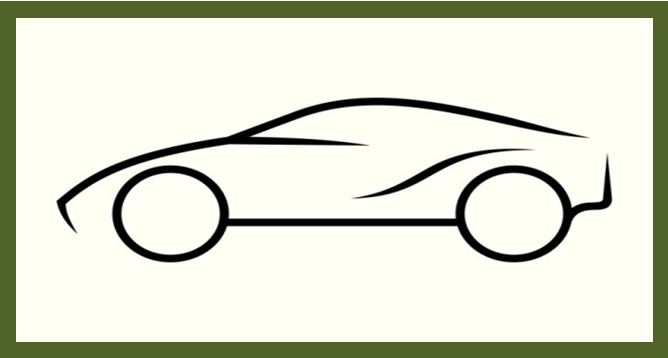So, weniger als 72 Stunden nach Schließung der Wahllokale hebt sich der Pulverdampf des Wahlkampfs. Nach 2017 (hier) und 2021 (hier) wage ich nachfolgend meine dritte Wahlanalyse.
„BT-Wahl 2025 – ein entschlossenes „So weiter“!?!“ weiterlesenThe German economy in October 2025 – is the autumn boom finally here?
Looking at the following economic KPI, the current picture does not look so bad – the usual German autumn boom might finally have arrived. But hey, let’s straight go into the details:
„The German economy in October 2025 – is the autumn boom finally here?“ weiterlesenBerlin – Paradies für Berater

So, wenn sich der Rauch verzogen hat, kann man ja mal einige Ereignisse Revue passieren lassen – z.B. die Aktionen der Berliner Verwaltung „in Kooperation“ (?) mit McKinsey: „Berlin – Paradies für Berater“ weiterlesen
Carmageddon – die ersten Risse

So langsam kommt Carmageddon in Fahrt. Seit über einem Jahr beobachte ich den Automobil-Markt in den USA und habe mich schon frühzeitig festgelegt, dass die nächste relevante Wirtschaftskrise genau dort heraufziehen wird (hier). „Carmageddon – die ersten Risse“ weiterlesen
Carmageddon – wirtschaftlicher Rollercoaster

Nach einem Rückgang der Verkaufszahlen um 2,0% im Februar (näheres hier), stiegen die Verkaufszahlen – wohl auf Grund des Ostertermins – im März wieder um 6,3% im Vergleich zum Vorjahr. „Carmageddon – wirtschaftlicher Rollercoaster“ weiterlesen
Krisenanzeichen?

Seit Jahr und Tag sammle ich auf diesem Blog wirtschaftliche Daten und Rahmenbedingungen, die eine Krise indizieren könnten – und ab und zu kommentiere ich sie auch mal ausführlicher, z.B. hier im Juli letzten Jahres. Seit dem letzten Kommentar zeigen einige Indikatoren, die auch in der letzten Finanzkrise das Herannahen des Crashes ankündigten, wieder nach unten: „Krisenanzeichen?“ weiterlesen
Niedrigzins = geringer Produktivitätszuwachs = Lohndumping?
Glaubt man Zerohedge, dann sorgten die Niedrigzinsen für eine Schwächung der Industrie-Produktivität in den betroffenen Ländern (hier), auch SPON sieht das so (hier), aber das Handelsblatt hat dazu eine eigene Meinung (hier). Ich würde letztere Ansicht eher als Werbung für die eigene Prognose abtun und SPON zustimmen. Herr Fricke hatte ja neulich auch aufgezeigt, dass das Wirtschaftswachstum PRO KOPF alles andere als berauschend ist (s. mein Verweis hier).
„Niedrigzins = geringer Produktivitätszuwachs = Lohndumping?“ weiterlesenDiesel – wahre Werte zählen

Während das Umweltbundesamt (UBA) noch im Juni 2017 den Rückgang der Luftschadstoff-Emissionen feierte (hier), sorgt es seit einigen Wochen für heftige Diskussionen mit seiner Behauptung, dass die insbesondere durch Dieselfahrzeuge ausgestoßene Stickstoffdioxid (NO2)-Belastung für bis zu 6.000 Tote verantwortlich sei (hier). „Diesel – wahre Werte zählen“ weiterlesen
Carmageddon – 2% Absatzrückgang in den USA

Nachdem die Autoverkäufe in den USA im Januar um 1,0% gestiegen waren (hier) fielen sie im Februar 2018 erneut um 2,0% (jeweils auf Monatsbasis). „Carmageddon – 2% Absatzrückgang in den USA“ weiterlesen
In eigener Sache: Keynote an der FOM – „Umbrüche“

Freundlicherweise bot mir die Hochschulleitung der FOM Berlin Gelegenheit, anläßlich der feierlichen Eröffnung des Semesters am 27. Februar 2018 eine Key-Note an die zukünftigen Studierenden zu richten. „In eigener Sache: Keynote an der FOM – „Umbrüche““ weiterlesen
In eigener Sache: „2018 – Cassandras Blick in die Glaskugel“

Was macht man, wenn man täglich ein „Morning Briefing“ und monatlich ein „Monthly“ schreibt? Nein, nicht noch eine „Wochenrückschau“ – sondern eine Jahresvorschau! „In eigener Sache: „2018 – Cassandras Blick in die Glaskugel““ weiterlesen
Carmageddon – stabiler Markt?

Nachdem die Auto-Verkäufe in den USA im Dezember nach dem Ende des „Harvey-Effekts“ wieder um über 5% (im Monatsvergleich) einbrachen (s. näher hier), und im Gesamtjahr nach vorläufigen Zahlen um 2,0% zurückgingen, sind sie im Januar 2018 um rund 1% gestiegen (s. hier). „Carmageddon – stabiler Markt?“ weiterlesen



